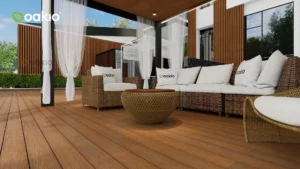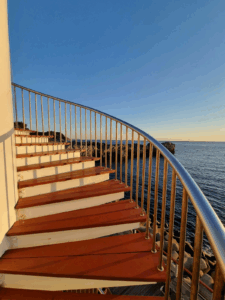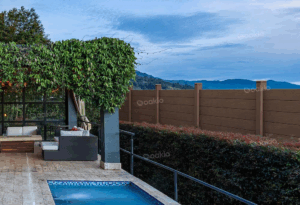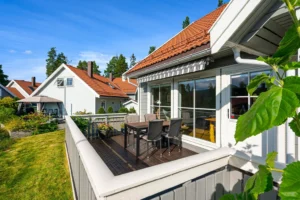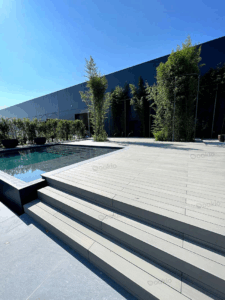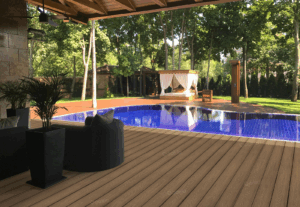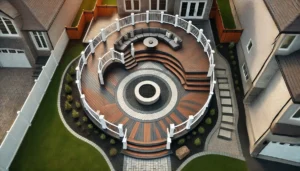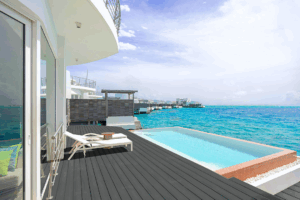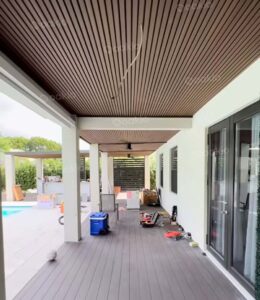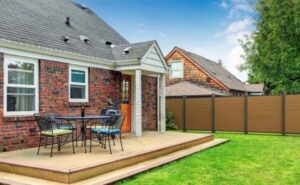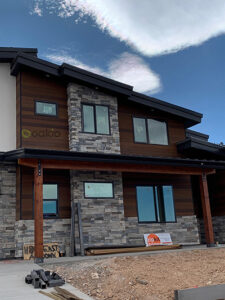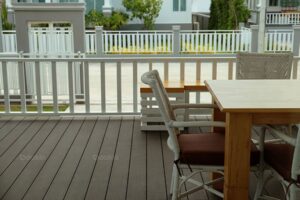Outdoor Decking Explained: Options, Materials, and Tips for Better Builds
Imagine your ideal outdoor space. Whether you picture a cozy retreat or a spacious gathering area, with the right planning and execution, you can create the outdoor decking of your dreams.
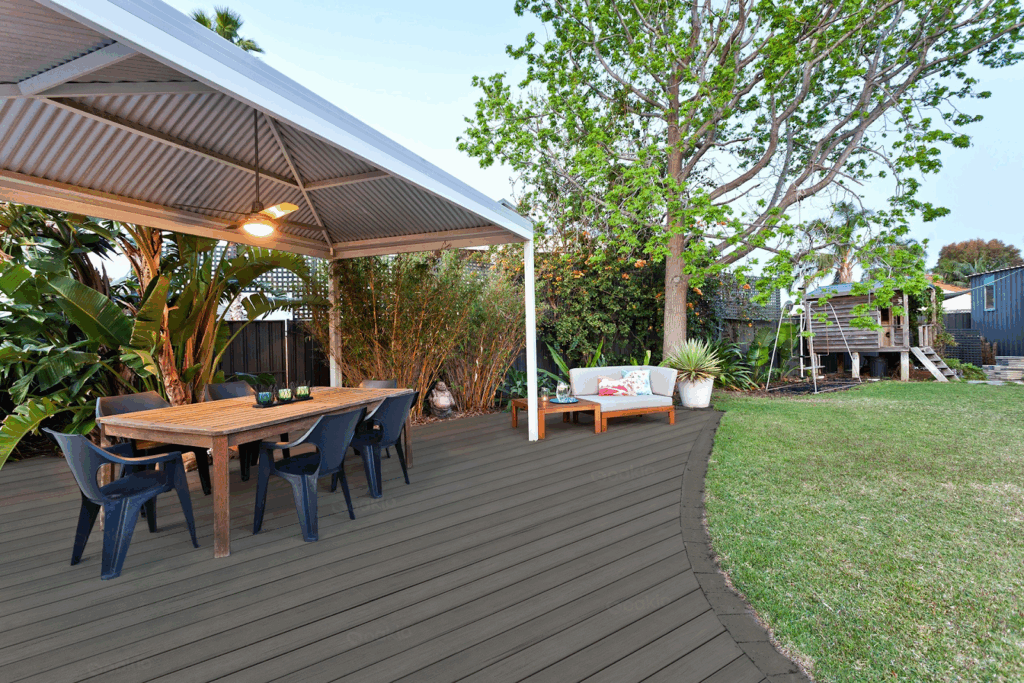
When you begin building an outdoor living area, you have the flexibility to incorporate spaces for dining, entertainment, or relaxation. Adding a deck to your home is a stylish way to expand your living space, create new areas for outdoor activities, and increase your property’s value.
If you have the time and resources, consider the option of building your own deck. While it may seem daunting at first, the process is more manageable than you might expect.
This guide will outline the essential steps for constructing your outdoor deck, focusing on composite decking to simplify the process and provide you with the necessary information to successfully build the deck of your dreams.
The Steps for Building Your Outdoor Deck
Step 1: Planning Your Deck Build
First, assess your outdoor space to determine the dimensions, size, and shape of your planned deck. Verify whether the chosen area can support the weight of the deck. If you need assistance, consult a structural engineer.
Consider the expected load and foot traffic that the deck will need to support. Additionally, consider factors such as sun exposure, drainage, and how the deck will integrate structurally and aesthetically with your home.
Next, examine your local building codes and regulations to ensure that your deck project complies with all requirements, including permits if they’re needed. Be aware that safety codes may dictate specific distances and clearances from windows, overhanging trees, and combustible materials.
Step 2: Choosing the Right Material: WPC vs PVC
When considering alternatives to traditional wood decking, both PVC and wood plastic composite decking (WPC) have quickly gained popularity in the market. Therefore, it is essential to choose the material that best aligns with your specific needs.
WPC decking, often referred to as composite wood, is created by blending wood fibers with plastic, resulting in a durable product. This combination ensures longevity and provides a natural wood appearance. Many manufacturers, such as Oakio, incorporate recycled materials, making WPC an environmentally friendly choice.
PVC decking is completely synthetic, which increases its durability and makes maintenance easier. Its plastic composition offers outstanding resistance to moisture and insects.
The decision for the best materials for outdoor decks hinge on the factors that are most important to you. If you value durability and low maintenance, PVC may be the more suitable option. On the other hand, if you prefer a natural aesthetic and environmental sustainability, WPC might be a better fit. The two materials can differ in price, but PVC is typically more expensive up front.
Step 3: Building Essentials and Tips
Once you have your plans and materials prepared, it’s time to build the decking. Before you begin, ensure you have a clean, smooth, and flat surface for proper installation.
Start by conducting a thorough site inspection to identify any potential obstacles, such as tree roots, utility lines, or uneven ground, that could compromise the foundation of your deck. To prevent future foundation shifting, clear the area of vegetation, rocks, and debris.
When installing the decking planks, keep in mind that the Oakio decking boards will expand and contract with changes in temperature. Changes in length are most significant during the installation process and should be considered. Ensure there is enough spacing between the deck boards to allow for expansion and contraction without buckling.
Ventilation is crucial for the longevity of your deck. Although WPC and PVC materials are moisture-resistant, moisture buildup can lead to mold and mildew growth and rusting fasteners. Ensure there is adequate natural airflow, as these measures can extend the lifespan of your deck by several years.
If you plan to incorporate any fire features, such as a fire pit or stove, create a buffer zone using stone, brick, or heat-resistant pads to prevent direct exposure to open flames.
Optional Step: Adding a Fire Pit to Your Deck
Fire pits can serve as a cozy and stylish centerpiece for your deck, adding warmth and ambiance to create an inviting space for outdoor relaxation.
There are two primary types of deck fire pits: gas fire pits and wood-burning fire pits. Gas fire pits are often favored over wood-burning options due to their controlled flames, minimal risk of sparks and embers, and reduced heat transfer.
If you prefer a wood-burning fire pit, consider installing flame-resistant bases, a raised design to contain sparks and embers, and heat shields to safeguard your deck surface and lower overall fire risk.
To install a fire pit, start by placing a fire-resistant pad, paver, or fireproof mat on the deck surface where the pit will be located. Next, arrange fire bricks or concrete pavers over the barrier to establish a solid base. Use a level to ensure the surface is smooth and even.
Once the base is ready, stack retaining wall blocks in either a square or circular pattern, applying masonry adhesive to prevent shifting. Be sure to leave small gaps for ventilation.
Finally, install a spark screen or metal grate to minimize the risk of flying sparks and embers. Always keep extinguishing tools nearby so you can quickly address any potential fire incidents.
In addition to creating a safe fire pit on your WPC deck, it’s important to foster a secure environment to minimize potential risks. Ensure that you establish a no-burn zone around your fire pit, keeping all flammable objects at least 10 feet away in all directions.
For a more comprehensive guide on constructing a fire pit on your WPC deck, please refer to our detailed guide.
Another Optional Step: Outdoor Kitchens for Entertaining
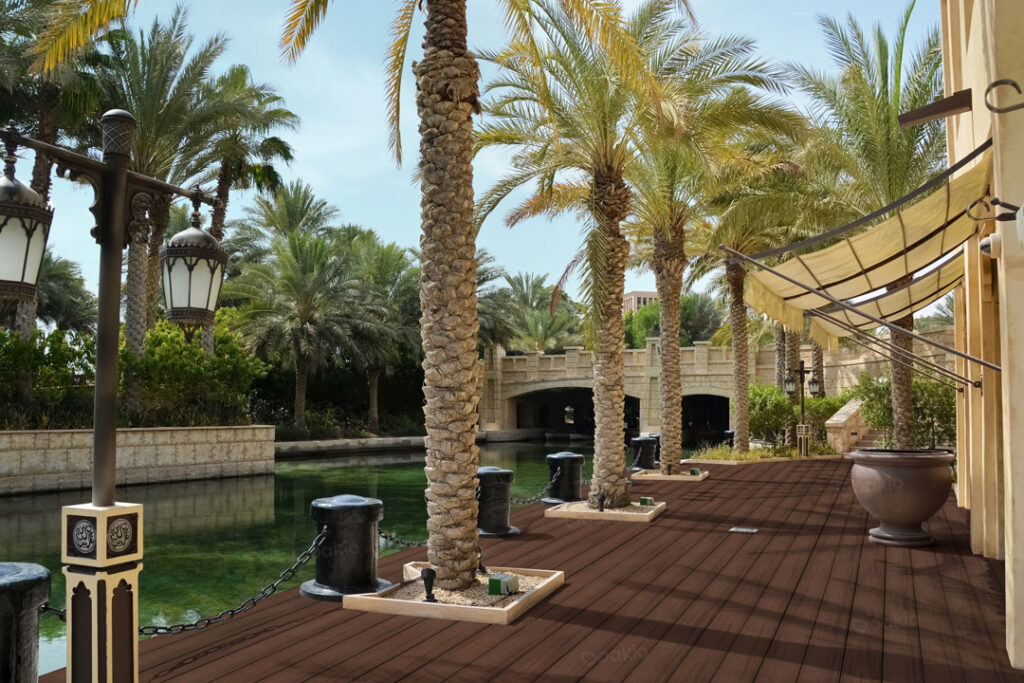
By building an outdoor kitchen, you can turn your outdoor space into a versatile area ideal for hosting parties and gatherings, allowing you to cook and dine outdoors with family and friends.
If you’re interested in constructing an outdoor kitchen, then you will need a grill, countertops for food preparation, storage cabinets, and seating. Additionally, you must plan to connect essential kitchen utilities safely, such as electricity, gas lines, and water.
Be sure to install a fire-rated mat or a stone pad beneath the grill or any heat-generating appliances to prevent heat damage. Proper ventilation is important to ensure that heat does not accumulate. Furthermore, ensure that the surrounding surfaces are treated with waterproofing to prevent spills or moisture from seeping into the material.
Step 4: Maintenance and Care for a Long-Lasting Deck
Keeping your outdoor decking well-maintained is essential for preserving both its beauty and functionality. Here are some tips and techniques to help you care for your deck effectively.
Regular cleaning is crucial. It prevents the accumulation of dirt, mold, and mildew, which can cause significant long-term damage if left unaddressed. Use appropriate cleaning solutions and tools to thoroughly eliminate all debris from your deck.
Inspect your deck every season for loose boards, damage, or other potential hazards. Pay special attention to areas exposed to fire and water, looking for signs of heat damage or leaks.
Each season presents unique challenges for deck maintenance. In spring, inspect for any damage caused by snow or ice. During the summer, be aware of increased heat and foot traffic. When fall arrives, take steps to remove any leaf litter or dirt that could lead to staining.
Conclusion: Enjoying Your Outdoor Deck Project
Making a deck can be hard work but it lets you take control over personalizing your deck in the way you envisioned it to be. When your deck is how you wanted it, complete with fun and functional features, each drop of sweat pays out in dividends.
Of course, you still need to maintain it. But picking the right material for you, ensuring that you safely installed everything, and taking regular care of the deck will make sure it remains as beautiful as the day you finished furnishing it.
Now that you know what you need to consider, why not start planning now? You can order a free sample of quality outdoor wood decking material from Oakio today. This can help you take that first step of deciding what materials to use. If you like what you see, consider getting in contact and your dream deck might come sooner than you might think.
Trending Reading
What Are the Differences Between the WPC Board and PVC Board?
[2025 Update] How Long Does WPC Decking Last?
